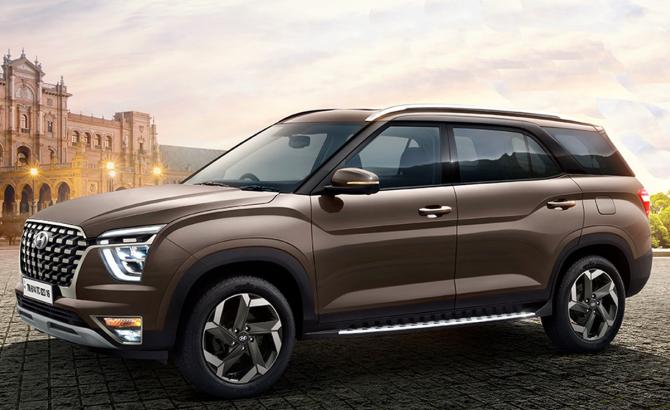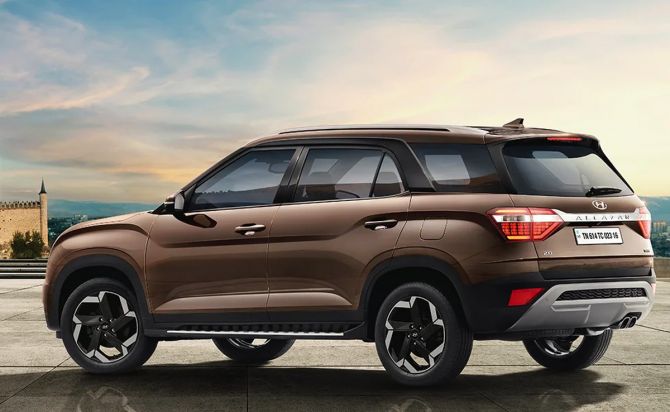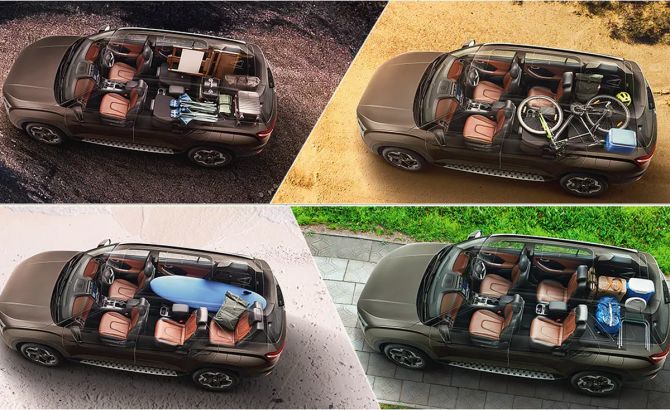
Hyundai Alcazar review: Packs in a premium feel
The car is built in a manner that stands tall and rugged on the city streets, without ever being uncomfortable, says Pavan Lall.
Hyundai’s new SUV, the Alcazar, is a testament to the Korean automaker’s sense of what its clientele exactly wants.
Its latest seven-seater is not just a large-sized sports utility vehicle (SUV), but one that is aimed at customers who demand more than what the Creta or the Santa Fe offers.
Alcazar, which shares its name with a general in the Tintin comics and has an imposing presence and aura to boot, allows customers to do things that they couldn’t with the aforesaid smaller SUVs from the Hyundai stable.
What it means is that the Alcazar comes in both automatic and manual transmissions, and in diesel as well as petrol variants.
The version we tested was the automatic and it hit high speed in a jiffy without much of a struggle.
It was easy and supple to drive on highways and city streets, as well as equipped with a two-litre turbine that gives you enough power.
For city commuting, the seats of the Alcazar are comfortable with strong backrests and sufficient cupholders and amenities that include bottle and flask holders.
The consoles and entertainment centres are well placed and easily reachable for the driver.
Overall the car is built in a manner that stands tall and rugged on the city streets, without ever being uncomfortable.
Try to push it hard and the car will accelerate sufficiently, while never indicating any sort of body roll or lurching.
The Alcazar, then, is going to compete head to head with other seven-seaters from peer group manufacturers that include Toyota, Mahindra and Mahindra and Tata.
What Hyundai does really well is package its vehicles at tantalising prices that are most desired by customers.
The version I drove is available at an ex-showroom price of around Rs 20 lakh.
Beyond the premium look and feel, the other features that it offers include folding tables in the middle row, sufficient charging points and even an onboard air purifier as part of the ventilation system.
All in all, the Alcazar packs in a premium feel. It’s reflected in the aluminum accents on the insides as well as the leather trims, ambient lighting options for the insides of the cabin, and an impressive list of features such as panoramic roofs, power adjusters for the driver’s seat, wireless phone chargers, paddle-shift style gears and Bose sounds systems.
Hyundai Alcazar Signature (O) Petrol AT
- Power: 159 PS
- Torque: 191 NM
- Transmission: 6AT
- Top speed: 185 kmph
- No of cylinders: 4
- Displacement: 1999
- Kerb weight: 1,425 kg
- Price: Rs 19,84,900 (ex-showroom)
Most three-row cars are that only in name because the last bench is really a compressed row suitable for small children or those who are short in stature.
It’s the same story with the Alcazar. By the way, drivers who are looking for a spare wheel will find it under the car hooked up to the undercarriage.
What’s different from the Creta? The Alcazar has a wider and longer wheelbase, which is unusual compared with other SUVs that are similar to smaller models that are being expanded in that they use cosmetic tricks to beef up the bumper or the front part of the vehicle.
There’s a substantial increase in length, which makes the vehicle look not only like a bigger SUV but also drive like one.
The Alcazar has a very distinctive and premium grille in dark chrome, which is similar to the kind of finish that has the badging at the back of the vehicle.
The dark chrome gives the SUV an overall look and finish that makes it appear much more premium than what the Korean carmaker offers.
Over the years, Hyundai has smartly carved out a niche for itself by catering to customers and giving them products at prices that are similar to those of its competition, but with more or better features that translate into a winning combination.
The trick, of course, lies in being able to continuously find sub-segments to play and win in, which Hyundai seems to be doing thus far.
Feature Presentation: Rajesh Alva/Rediff.com
Source: Read Full Article





